A Love Letter In A Meme World: Demna’s Balenciaga Era Ends on Substack
From Couture to Context: How Balenciaga and Substack Are Rewriting the Rules of Fashion Storytelling
Accountability friends are important. Or maybe they just know that at 6am ET on a Wednesday, I tuned into Demna’s final Balenciaga show via Substack. There were maybe 900 of us watching — I switched to the IG Live for a better stream (6.5K viewers, way better resolution), but something about Substack made it feel... intimate.
…. Then I went to work wearing these sunglasses ….
Why Substack, Why Now?
Balenciaga is the first major luxury house to launch on Substack — and that says a lot about where storytelling, community, and culture are headed.
While most fashion brands are still figuring out their Substack strategy, Balenciaga’s entrance feels intentional. Substack favors context over content, critique over consumerism — which mirrors the brand’s ethos under Demna. His Balenciaga doesn’t just show clothes; it starts conversations. It questions the system. It’s fashion with not only something to sell but something to say.
Which makes Substack a perfect fit.
In recent months, we’ve seen a rush of brands join the platform — Nike, Tory Burch, The RealReal, Free People. Our bestie Sportsverse covered Nike’s debut HERE
See Substack newsletters function more like digital mini-magazines than ad blasts. You’re speaking on your own terms — without the algorithm snapping your neck. If storytelling is the new storefront, Substack is the new magazine stand.
Or like Dede put it “ it’s the Close Friends for people who read.” You’re not chasing the scroll. If someone’s there, they care.
And if Substack has a type? It’s the Carolyn Bessette Kennedy aesthetic. Someone please tell The Frankie Shop they’re up next!
Storytelling > Selling
Luxury brands aren’t just selling products — they’re selling perspective. They’re selling a narrative. Substack gives them a direct line to their audience — no pressure to go viral, just space to build trust, articulate a worldview, and tell stories that actually stick.
The best newsletters, imo, read more like zines than emails. They feature founder stories, guest contributors, and interviews with cultural commentators. They bring in relevant figures to share life hacks, moodboards, playlists, personal notes, photos etc. Content that makes people stay. It’s a return to craft. To depth. To care.
Even magazines are having a quiet renaissance. Ngl I’ve been counting down to the next Vogue France issue under CTJ, and recently read a quote from Graydon Carter in i-D where he said:
There’s something tactile about it all — even in digital form. A slower scroll. A full story. A little ritual.
And for the record: I love zines more than anything, but to address the Amazon buying Vogue rumor — Do we really think Amazon is in the mood to buy another money-losing media empire right now?
Balenciaga Under Demna.
Demna didn’t just step into the role of creative director — he transformed Balenciaga into a cultural archive for the internet age. His collections referenced history while embracing the now and the future. Each show felt like a thesis disguised as a runway.


A Love Poem in AI: The Fall 2022 Couture show opened with a love poem read by his husband Loik, generate by an AI voice. Models wore couture gowns paired with Mercedes-Benz face shields — a surreal blend of romance, futurism, and archival codes of the house.
Or take the Erewhon collab in LA: part parody of wellness capitalism, part dystopian love letter to LA. Think $20 seaweed, juice shots, and celebrities in oversized hoodies playing GTA.


Then there was the NYC show — models in neoprene masks marching through the New York Stock Exchange like alien bankers in a post-capitalist Matrix. The message? Fashion is cute, but it’s business at the end of the day.
Then came the post-COVID red carpet show. There was no traditional catwalk, just models and celebrities arriving, with paparazzi flashing up the screen. The show’s venue was a livestream of the red-carpet itself.
But don’t get me wrong, Demna didn’t just critique the system — He worked within it. He sold Triple S sneakers like hotcakes. Turned Ikea bags and Crocs into cult objects. And still moved over $3.3 billion in product.
And yet, through it all, he made Balenciaga feel… personal. Raw and Weird. Not begging for approval.
Muse, Memory, and Motherland
“I became a forever refugee. I carry that pain with me. That’s why the war in Ukraine is personal for me — it brought everything back.” - Demna
One of his most powerful shows was Fall 2022, where he collided politics and his personal grief where models footslogged through artificial snow, clutching their belongings in trash bags — a visual echo of Demna’s childhood, fleeing war in Georgia.
And there she was in the front row, Kim Kardashian — wrapped in yellow Balenciaga caution tape. Barely able to move, but absolutely present.
That relationship—facilitated by Kanye West—brought Demna into Ye’s universe and vice versa. From the blackout Met Gala look to the pink Barbie spandex, Kim was more than a muse; she was the embodiment of his vision: famous, polarizing, hyperreal. Together, they blurred the line between fame and fashion, muse and marketer, performance and persona. For Kim, Demna was a portal into a world that had long shut her out.
She wasn’t just dressed in Balenciaga. She was Balenciaga under Demna.
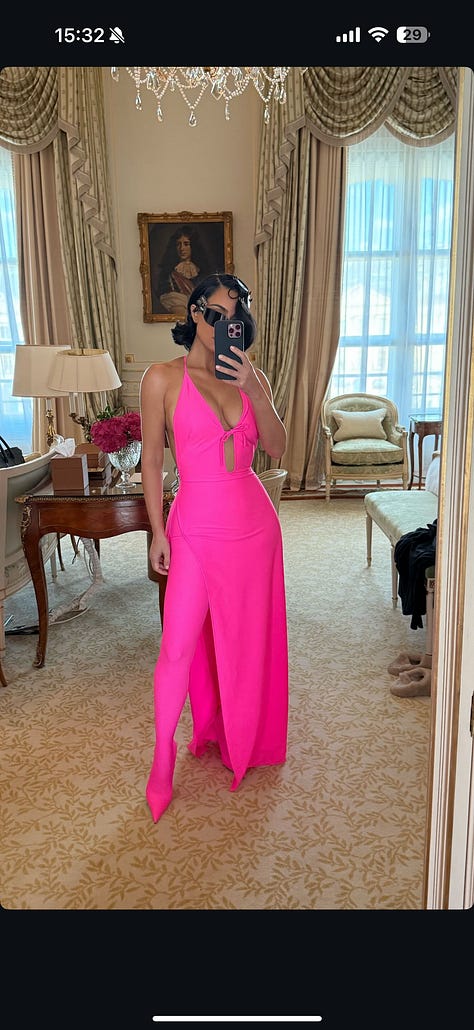


I mean she served.

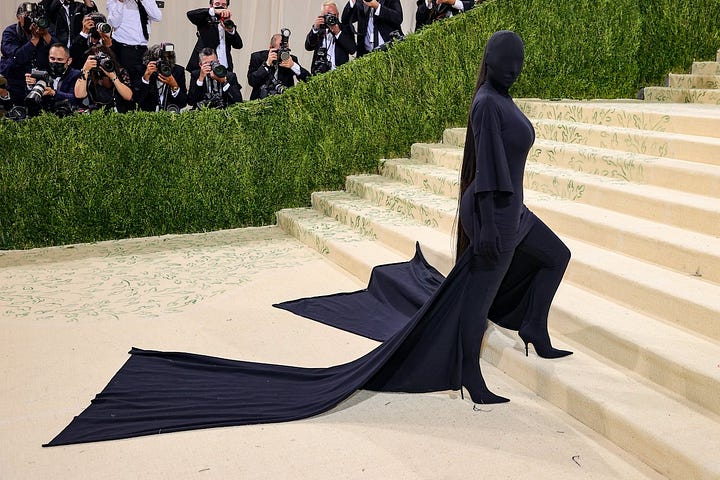
That tension — between visibility and disappearance, luxury and rawness, performance and protest — defined his tenure. And the love-hate current running underneath it all? That’s where it gets personal.
The Passion That Made It All Matter
I once read that love and hate are two sides of the same coin — and that coin is passion. That idea inspired my reflection below.
Demna once said that in the beginning, he was mostly making fun of fashion — poking at it with his spicy, gimmicky humor. That humor was his armor. But underneath it all, there was always something deeper: respect, pain and an obsession to redefine the codes.
He’s spoken openly about growing up without the freedom to laugh or smile — how confidence was discouraged, how vulnerability wasn’t safe. But fashion gave him a way to shape-shift.
To hide and to be seen at the same time.
To create an illusion — one so sharp it cut through the noise.
Over the years, we’ve watched him balance that contradiction — between love and critique, distance and intimacy — in every show.
It’s love, and it’s hate. It’s critique, and it’s devotion.
Because the opposite of love isn’t hate — it’s indifference.
And Demna has never been indifferent.
Maybe that’s the point.
Maybe that’s what made his farewell so meaningful.
His final couture show played to Sade’s “No Ordinary Love.”
Like two worlds finally learning how to coexist.
A farewell without bitterness. A show that said:
I don’t need to shock you anymore. I just want you to feel it.
You realize the love was there all along.
Just buried under layers of irony, fabric, caution tape, and gimmicks.
Because when someone who’s always kept you at arm’s length suddenly lets you in — even just a little — you feel it.
And maybe that’s the ultimate expression of luxury in 2025:
Vulnerability.


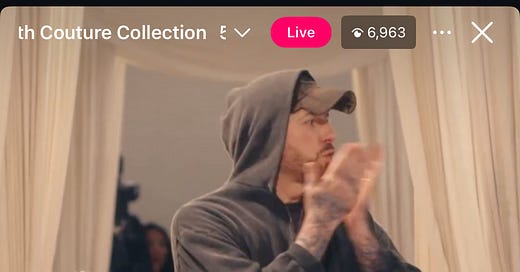






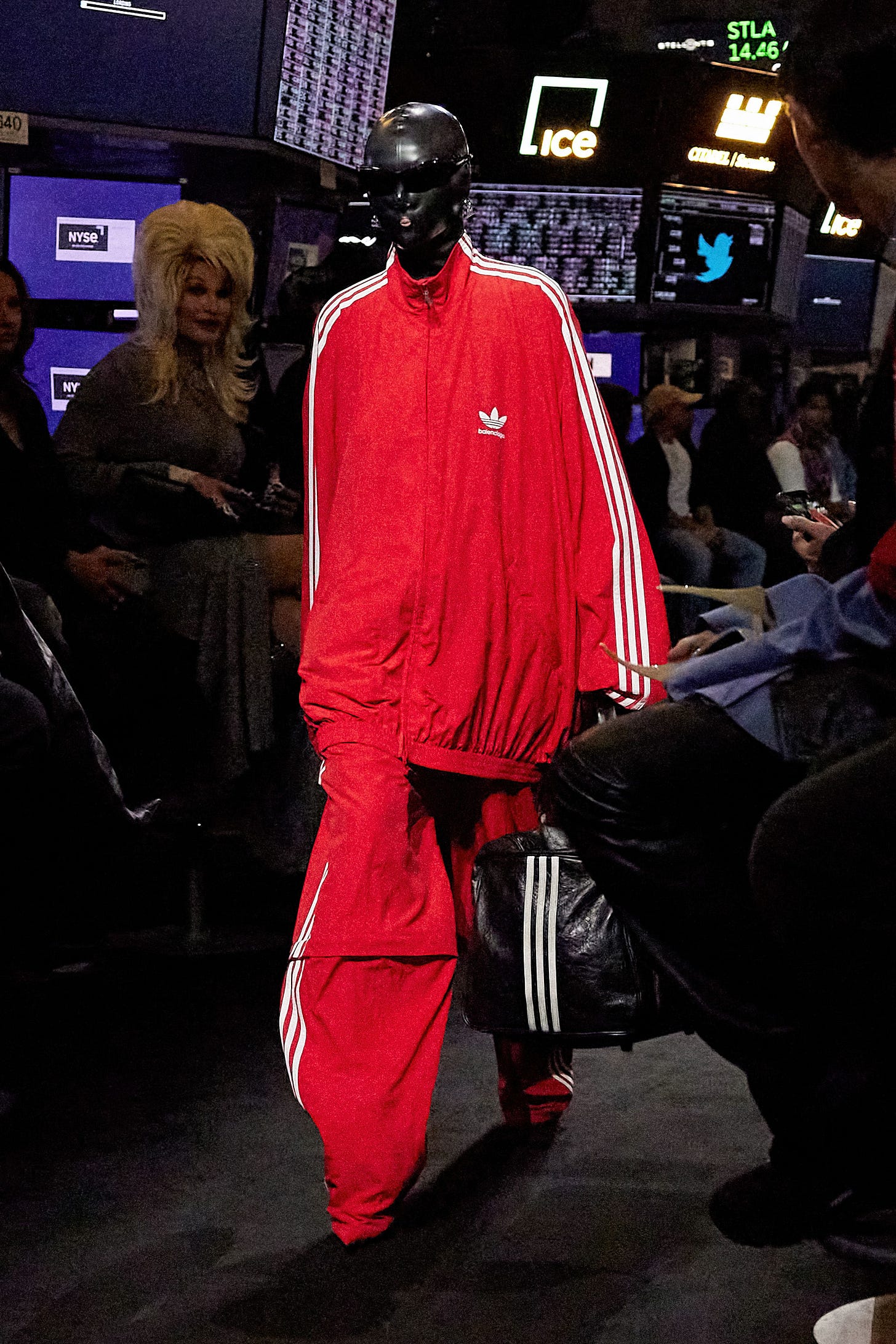

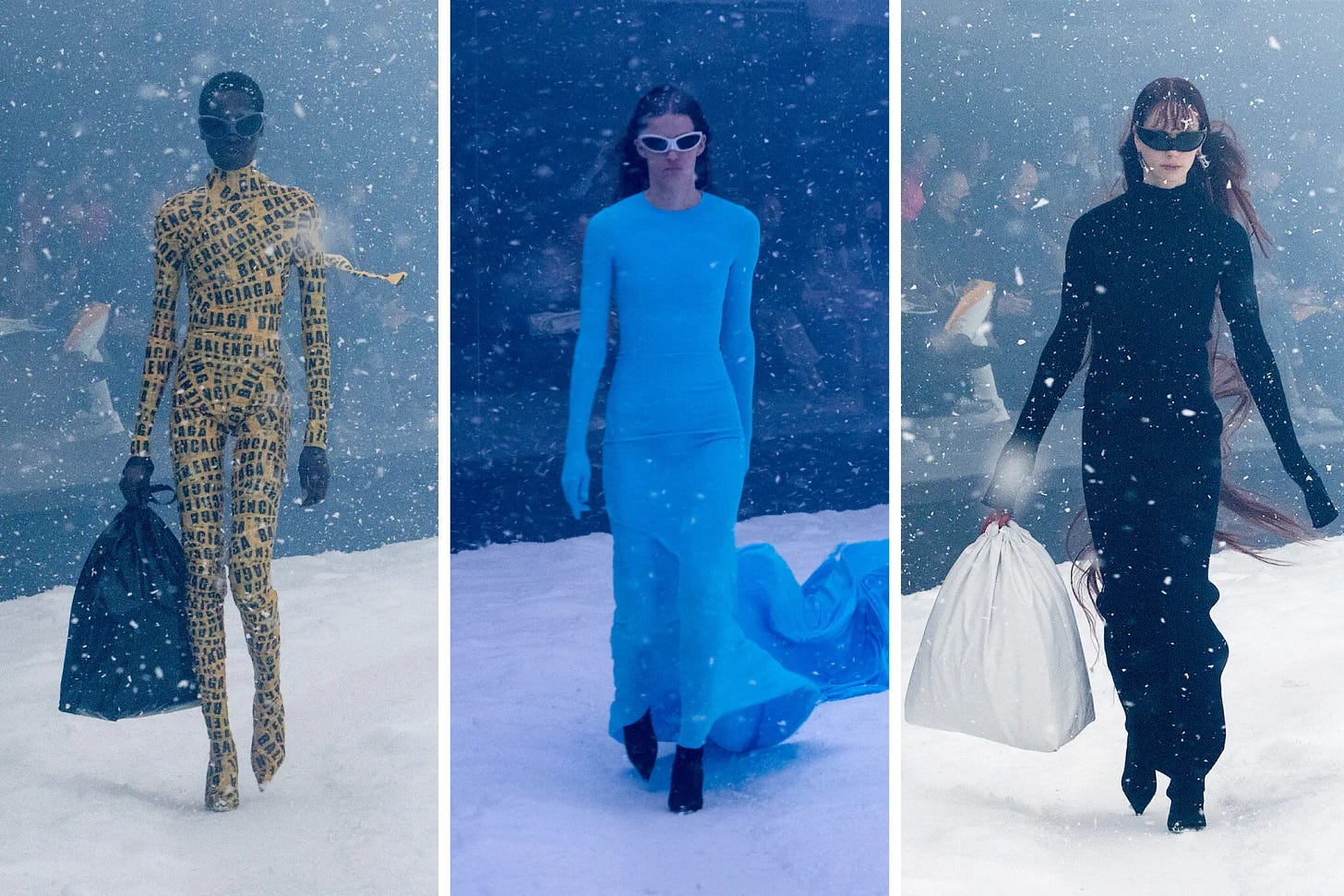

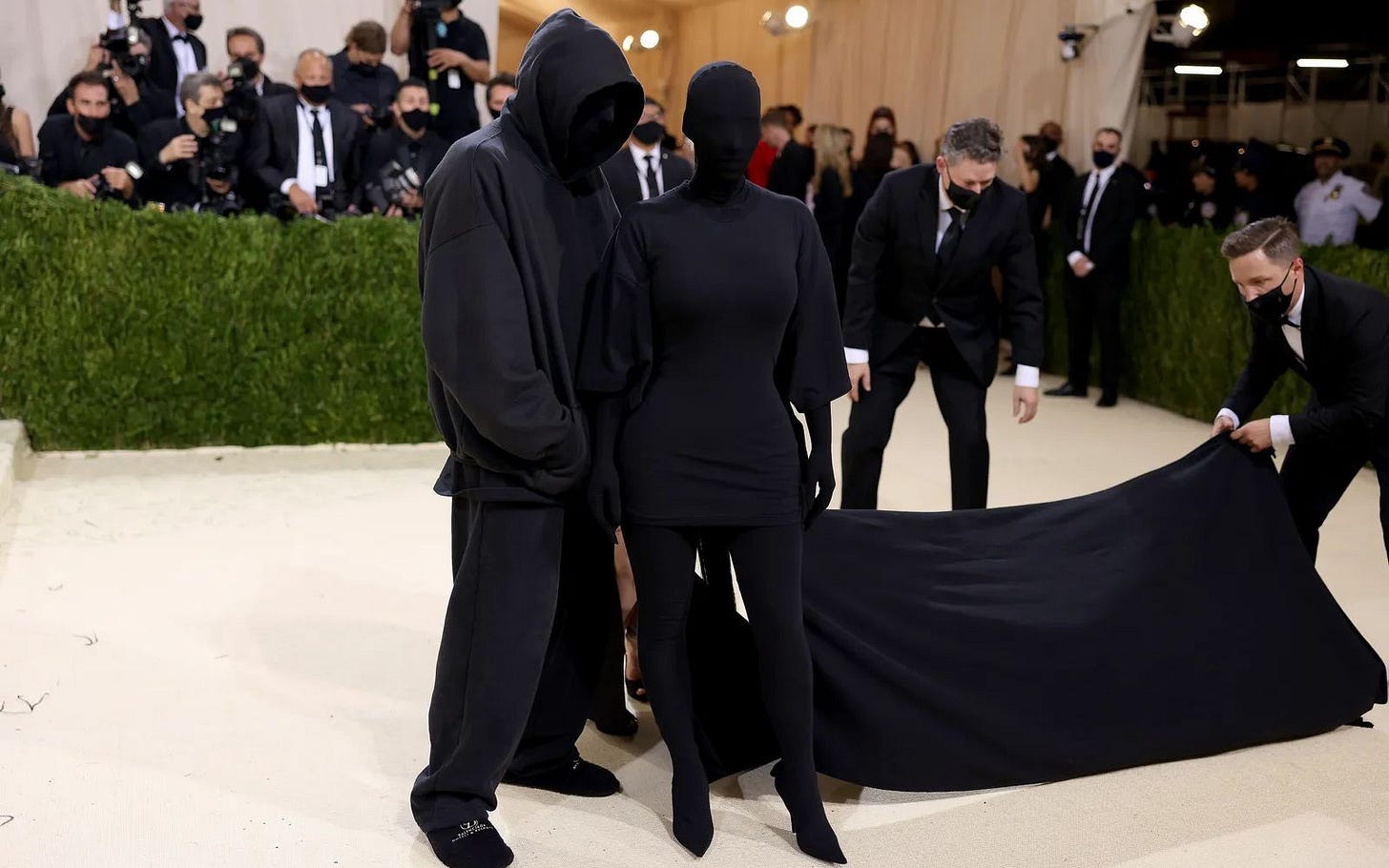
Amazing Read!
I made it!!!